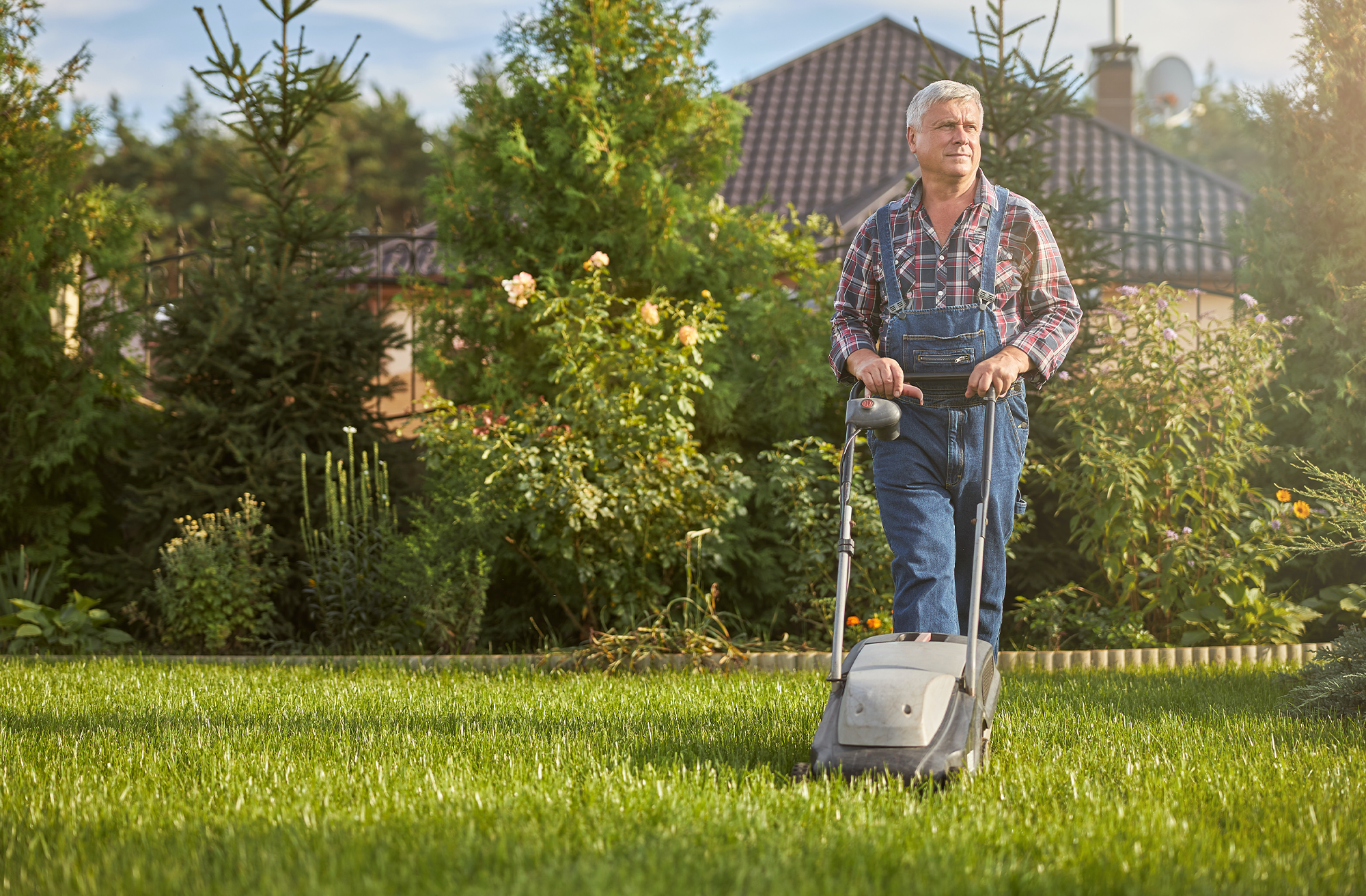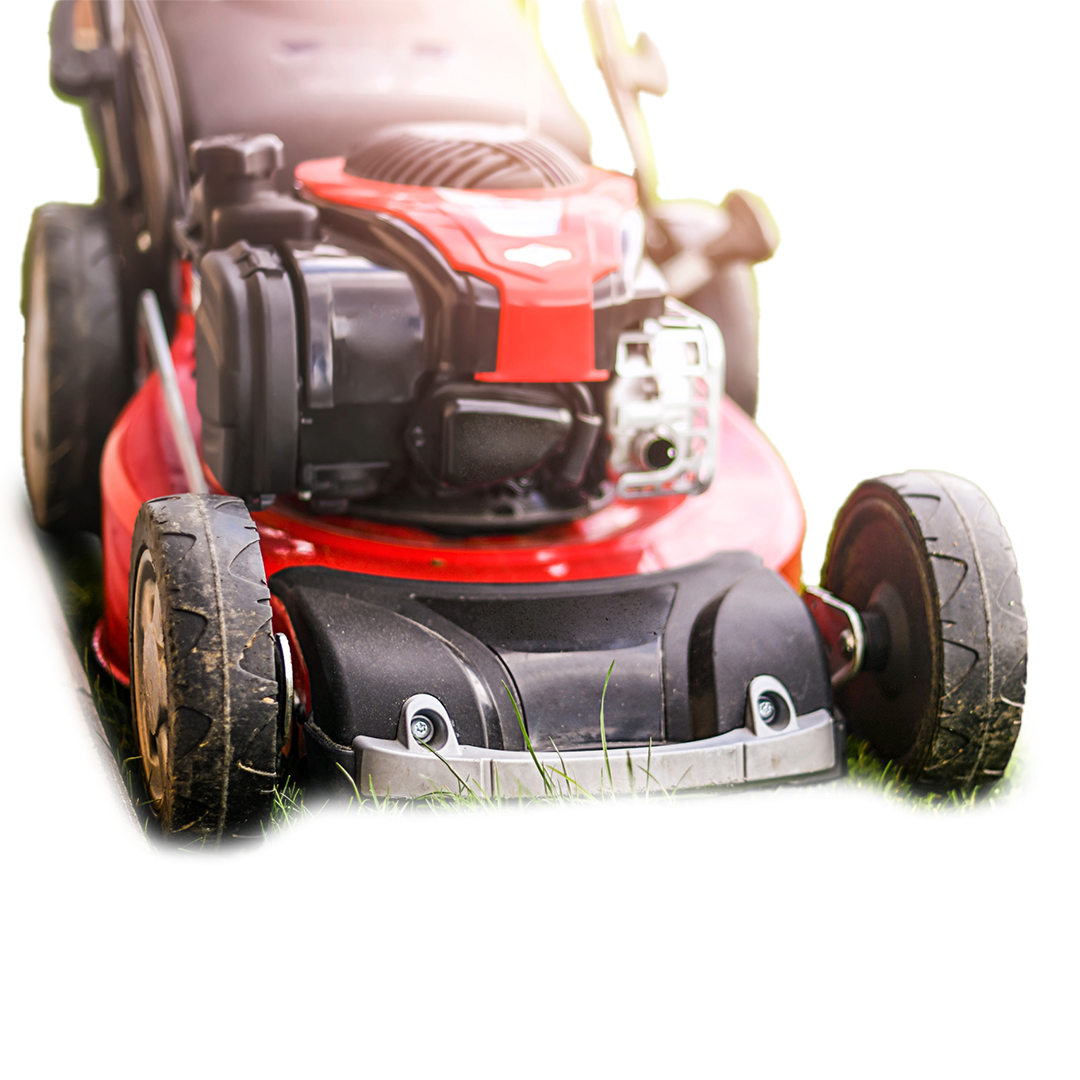
Lawn Care Tips
Mowing Practices to Keep Your Lawn Healthy and Attractive.

Mowing is one of the most important practices for a healthy lawn. The frequency and height of your mower blades are key to keeping your grass looking its best, but there are other factors that affect how well it grows and looks.
If you want to learn more about mowing techniques and what makes a good lawn care plan, keep reading!
Understanding Your Lawn
If you want to be a good lawn mower, it’s important to understand the different types of grasses and how they grow. Different grasses have different ideal mowing heights. For example, most grasses in Windsor-Essex are: Perennial Ryegrass, Fine Fescue, and Kentucky Bluegrass (KBG). These types of grasses grow best at 2.5-3 inches high. If you mow it too short (less than 2 inches) it can turn brown and die out in patches.
Choosing the Right Mower
When it comes to mowing, there are several different types of mowers available. Each type has its own pros and cons, so it’s important to choose the right one for your lawn.
- Lawnmowers with self-propelled systems make cutting easy by providing power from behind the wheels. These are ideal for people with a large yard or who want to avoid strain while pushing a heavy machine around. However, these machines tend to be expensive and can be difficult for some people to operate due to their weight (upwards of 100 pounds).
- Riding mowers are great because they allow you to sit down while working rather than standing up all day long–but they can also cost thousands of dollars! If this sounds like something you’d like but don’t want the hassle of buying new equipment just yet, consider renting one instead or hiring a professional lawn care service to cut it for you: You’ll save money while still getting an excellent cut every time!
Preparing Your Mower
You should always do a few things before use the mower. These include:
- Checking the oil level and adding more if necessary.
- Checking the air filter, replacing it if necessary.
- Check the spark plug and replace it if necessary (check your owner’s manual for instructions).
Mowing Techniques
Mowing techniques are important to maintaining a healthy lawn and achieving the desired look. The following tips can help you get the best results from your mower:
- Mow regularly. Mowing at the proper height and frequency is essential for healthy grass growth, so keep an eye on how often you need to mow based on the season and type of grass in your yard.
- Avoid scalping by raising or lowering your mower deck when cutting tall or thin areas of grass (such as along fences).
- Use mulch mode when possible instead of bagging clippings because it reduces waste by allowing the clippings back into the soil where they decompose more quickly than if they were thrown away as trash. The clippings also provide nutrients that can help your lawn stay healthier.
Mowing Frequency
The frequency of mowing your lawn depends on a few factors: the season, grass type and climate. Here are some general guidelines for mowing frequency:
- In spring and summer, when temperatures are warm and grass grows quickly, you should mow your lawn at least once every week to maintain a healthy lawn and good appearance.
- In fall/winter when temperatures begin to drop to around 5C (40F) grass will stop growing and/or slow down. Once this begins, you are safe to put your mower away for the year and wait until the grass grows back again next spring!
Dealing with Clippings
You may have heard that it’s best to remove clippings from your lawn, but this is not always true. Leaving them on the ground can actually benefit your lawn by providing nutrients and reducing thatch buildup. However, if you do choose to remove them from time to time (or all the time), there are a few things you should know about how best to do so:
- Pick up clippings as soon as possible after mowing. Waiting too long will allow them to dry out and become more difficult for bacteria in the soil to break down into organic matter.
Troubleshooting
You’ve just finished mowing your lawn and it looks great. But what if you notice that one side of the yard is longer than the other? Or maybe there are patches of grass that don’t look as healthy as they should be? These are common problems with mowing, but they can be fixed easily by following these tips:
- Check your blades–they might be dull! Dull blades will cause uneven cutting, which leads to ragged edges and damaged grass. Make sure you’re sharpening them regularly so that they stay at their best cutting performance!
- Ensure your mower is aligned properly–if not, it will cause uneven cutting too! If this happens often (or if you notice that one side seems higher than another), then consider having someone check out how well-aligned everything is before proceeding with any repairs or adjustments yourself
Final Tips and Takeaways
- Mow your lawn at the right time and height.
- Keep your mower blades sharp, and change them when necessary.
- Practice good lawn care techniques, such as watering, fertilizing and aerating your soil on a regular basis to promote healthy grass growth that will be less likely to suffer from pests or disease.
If you follow these tips for maintaining a healthy lawn, you should be able to enjoy its beauty for years to come!
Conclusion
Now that you have a better understanding of how to mow your lawn, it’s time to put these tips into practice. When you’re done, enjoy a beautiful lawn that will look great for years to come!

